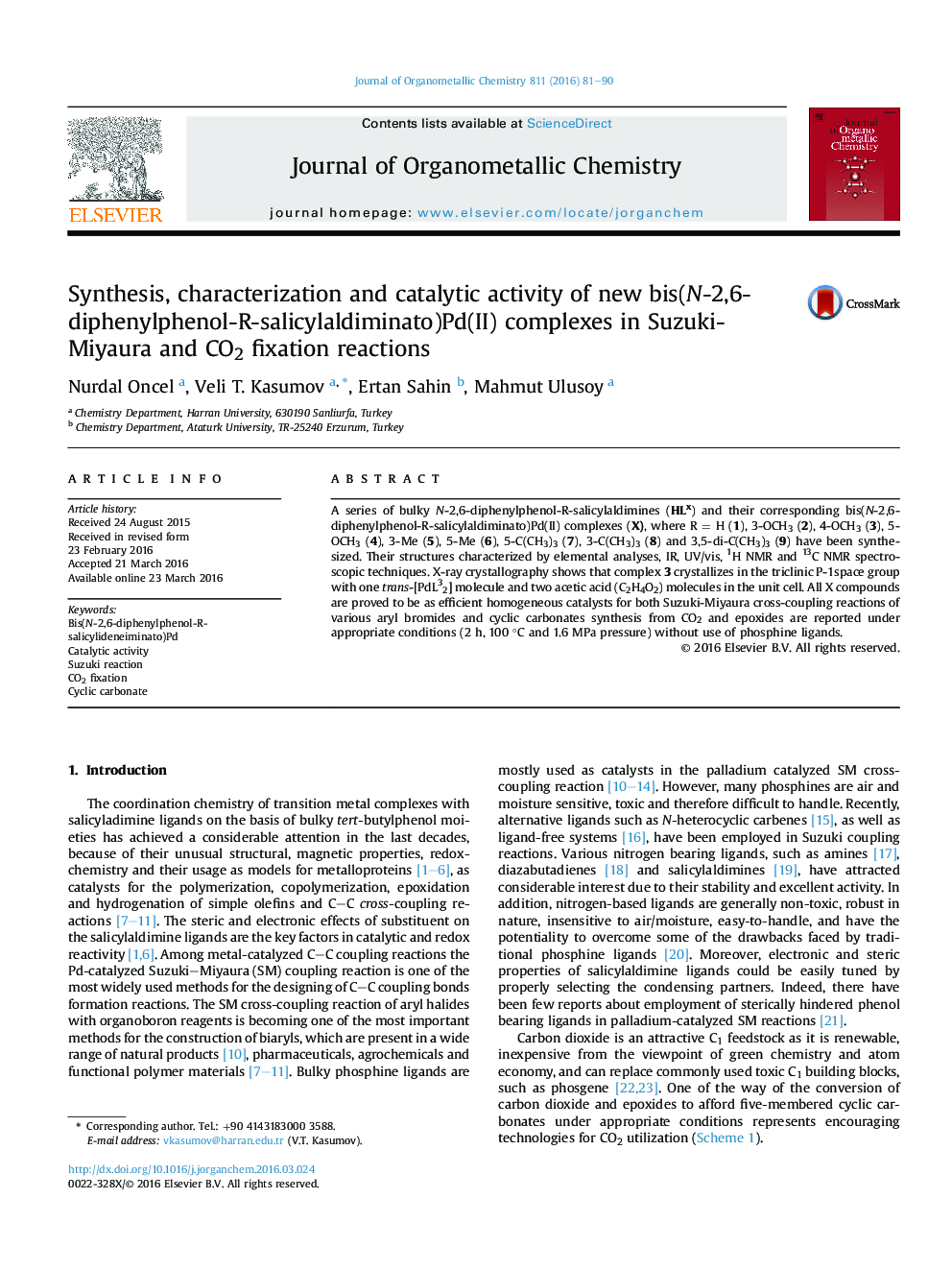| Article ID | Journal | Published Year | Pages | File Type |
|---|---|---|---|---|
| 1321835 | Journal of Organometallic Chemistry | 2016 | 10 Pages |
•A series of bulky salicylaldimines and their Pd(II) complexes have been synthesized.•X-ray crystallography shows that complex 3 crystallizes palladium complex with two acetic acid molecules in the unit cell.•Palladium compounds are proved to be as efficient homogeneous catalysts for both Suzuki-Miyaura cross-coupling reactions.•These complexes also performed as catalyst in cyclic carbonates synthesis from CO2 and epoxides.
A series of bulky N-2,6-diphenylphenol-R-salicylaldimines (HLx) and their corresponding bis(N-2,6-diphenylphenol-R-salicylaldiminato)Pd(II) complexes (X), where R = H (1), 3-OCH3 (2), 4-OCH3 (3), 5-OCH3 (4), 3-Me (5), 5-Me (6), 5-C(CH3)3 (7), 3-C(CH3)3 (8) and 3,5-di-C(CH3)3 (9) have been synthesized. Their structures characterized by elemental analyses, IR, UV/vis, 1H NMR and 13C NMR spectroscopic techniques. X-ray crystallography shows that complex 3 crystallizes in the triclinic P-1space group with one trans-[PdL32] molecule and two acetic acid (C2H4O2) molecules in the unit cell. All X compounds are proved to be as efficient homogeneous catalysts for both Suzuki-Miyaura cross-coupling reactions of various aryl bromides and cyclic carbonates synthesis from CO2 and epoxides are reported under appropriate conditions (2 h, 100 °C and 1.6 MPa pressure) without use of phosphine ligands.
Graphical abstractFigure optionsDownload full-size imageDownload as PowerPoint slide
